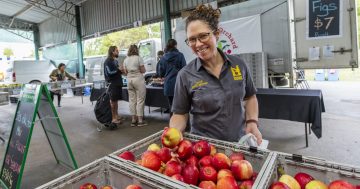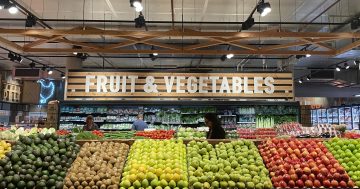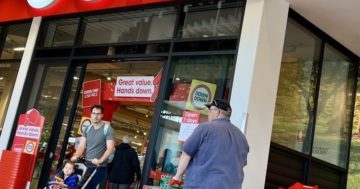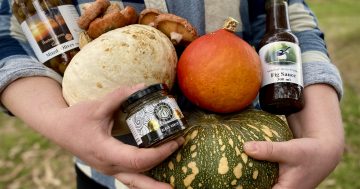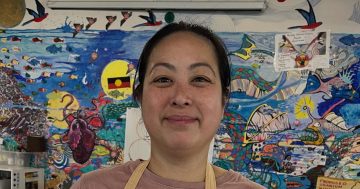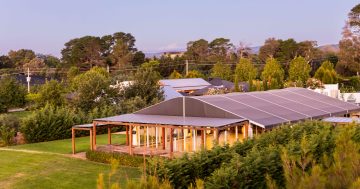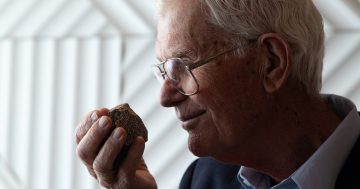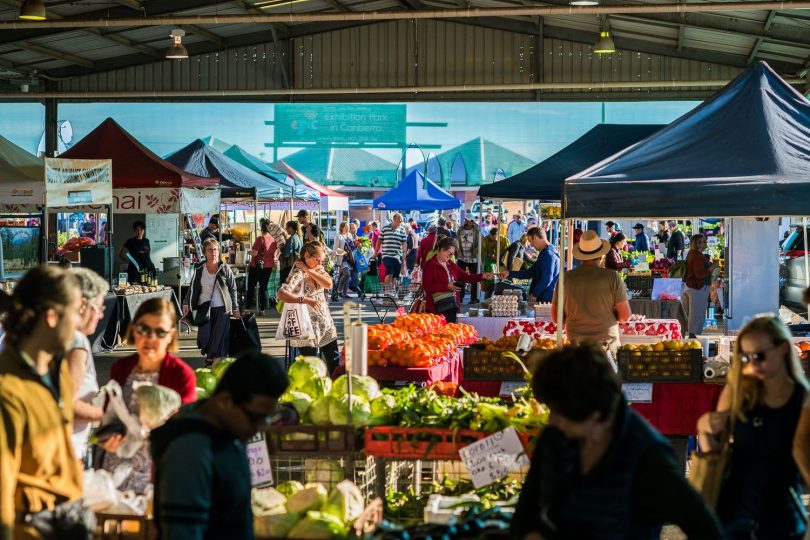
Crowds have flocked back to the Capital Region Farmers Market at Exhibition Park, post-COVID lockdown. Photo: File.
During the COVID lockdowns, it was something we all dreamed of: actually buying what we wanted from the person who produced, grew or created it, rather than taking a punt on what it looked like on a computer screen.
Today, the places that fulfilled those dreams – like Canberra’s Old Bus Depot Markets, Capital Farmers Market at Exhibition Park and the Moruya riverside markets down the coast – are roaring back to life, providing the long-missed connection between farmer/maker and customer.
Online shopping is now an option rather than a necessity, and the producers who have been supplying the region’s markets are back in business.
Manager of the Capital Region Farmers Market at Canberra’s Exhibition Park, Sarah Power says it’s all about connection – market customers connecting with the people who made what they want to buy.
She says some stallholders were like family having sold their produce at EPIC for the 18 years it’s been in operation, watched each other’s families grow and lived their lives together. For some, she says, their stalls offer supplementary income to their other employment. For others, the weekly stall keeps the wolf from the door.
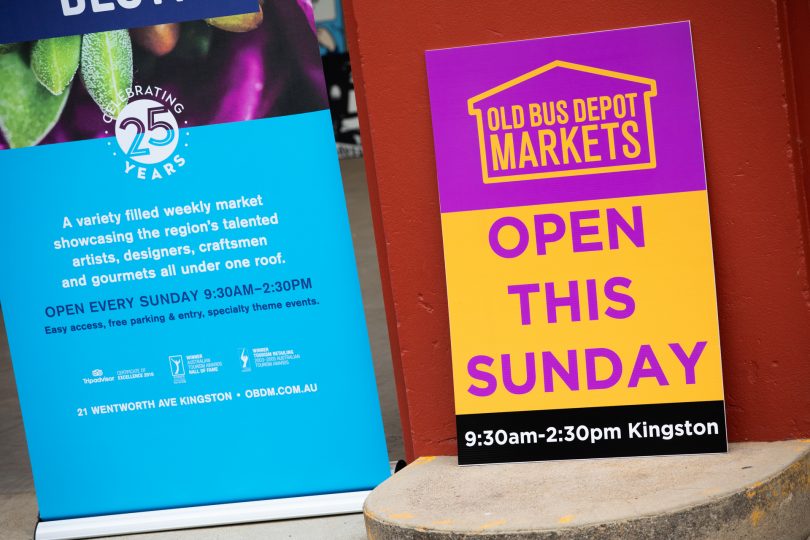
Recently reopened after the COVID lockdown, Kingston’s Old Bus Depot Markets are a must for locals and visitors on Sundays. Photo: Michelle Kroll.
“We invite stallholders from about a three-hour circle from Canberra,” she says. “So we have people coming from the South Coast, Snowy Mountains, Riverina, Wagga, Young, Yass and the Southern Tablelands.”
Part of the reason for its success, she believes, is all stallholders must meet requirements that they grow the food they sell and can prove it. This can go as far as inspecting the property where it’s grown.
“But when it comes down to it, we’re like a big family, so someone always knows someone else,” Sarah says.
The crowd favourites include citrus grower Mick Auddino, who rolls up to the EPIC site in his monster purple truck (which takes up four stall spaces), the Formichi family which not only makes traditional Italian smallgoods but also blasts out traditional Italian music to get customers in the mood, and the family-run Narooma seafood, with two generations now working the stall.
There’s also a sense of family at Canberra’s popular Old Bus Depot Markets at Kingston, which recently reopened after a COVID-enforced hiatus.
For co-director Anthony Niravong, it couldn’t reopen quickly enough. The majority of stallholders here too come from the Capital region, but also include Sydney and, occasionally, as far away as north Queensland.
But, according to Mr Niravong, it depends on what they’re selling. It must be made by the seller except on theme days, like International Day, when products can be on-sold from the maker.
“We have this guy in Cairns, he usually comes down a couple of times a year – he makes the most remarkable handcrafted wooden tables. That’s why we have him here, because he makes the most amazing things,” he says.
“Then we have this other guy who comes once in a blue moon. He makes these great leather belts. They are the sort of thing that last forever so he always does good business when he comes.”
But when it comes to favourites, Mr Niravong can’t go past the fellow who sells fresh orange juice.
“He’s just a young guy with a young family and this is how he makes ends meet. He’s having a go and I reckon that’s great.
“We have a lot of different people here who come from different walks of life. That’s why it’s so good to be back, so we can help those who don’t have another source of income. It’s been a long time coming for many of them.”
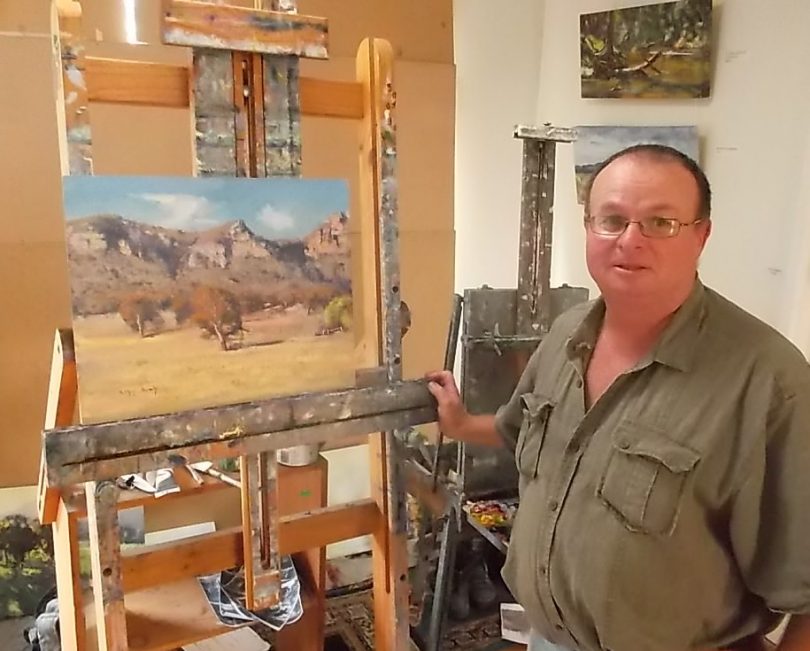
Bodalla artist Ritchey Sealy has been selling his work at the Moruya Markets for more than 20 years. Photo: Facebook.
One of the most popular markets in the South Coast region is down by the river at Moruya. Bodalla artist Ritchey Sealy has been selling his work there for more than 20 years. He is also involved with the market committee, working with other stallholders to ensure the enterprise stays true to its purpose – there’s not a mass-produced item in sight.
“The market started off small but now it has grown to be one of the most popular, with locals and we also get a lot of tourists,” he says.
Mr Sealy says there was a strong community spirit at Moruya, with stallholders looking out for each other – especially after the catastrophic 2019-20 bushfires.
“I did three months of solid firefighting,” he says. “We really got hammered down here.
“For me, it was good therapy to get back to painting, to put it all down on canvas.”
He says the markets always draw a good crowd on Saturdays because they sell goods straight from the maker.
“We’ve got some great people here: another artist who does beach paintings, some people who make clothes, potters, others do jewellery, great local produce – lots of stuff.”
Original Article published by Sally Hopman on Riotact.


